Ponderosa Lemon Tree
- September 14, 2023
- 0 comment
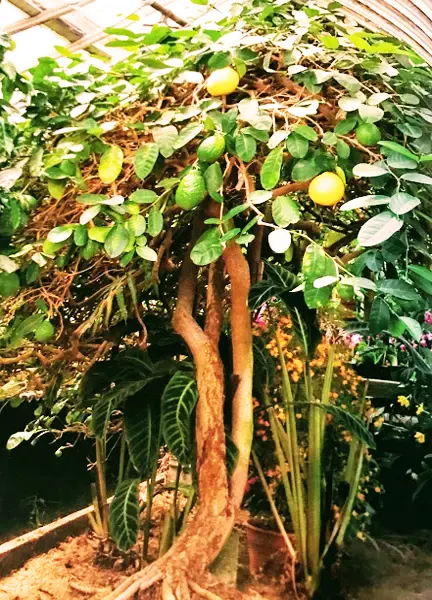
- Common Name: Ponderosa Lemon Tree
- Botanical Name: Citrus × pyriformis
- Family: Rutaceae
- Plant Type: Evergreen fruit tree
Lumber
Ponderosa Lemon (Pinus ponderosa) is renowned for its high-quality lumber. Its strong, straight-grained wood is a preferred choice in construction for its resistance to warping and twisting. It’s also prized for furniture, flooring, and more, thanks to its aesthetic appeal.

Mature Size and Growth Rate
Ponderosa Lemon trees can grow exceptionally tall, up to 200 feet, with trunk diameters of 2 to 4 feet. They have a moderately fast growth rate, adding several feet of height annually. This growth rate, along with their straight trunks, makes them valuable for timber and beneficial for wildlife and ecosystems.
Soil Type
Ponderosa Lemon Trees, like many citrus varieties, have specific soil preferences critical to their well-being. They thrive in well-draining soil that retains some moisture but doesn’t become waterlogged. The ideal pH range for the soil is slightly acidic to neutral, typically between 6.0 and 7.5. This pH range facilitates nutrient uptake and prevents issues like nutrient deficiencies, which can impact fruit quality.
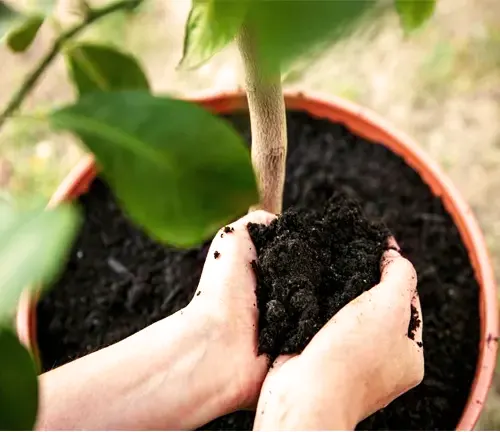
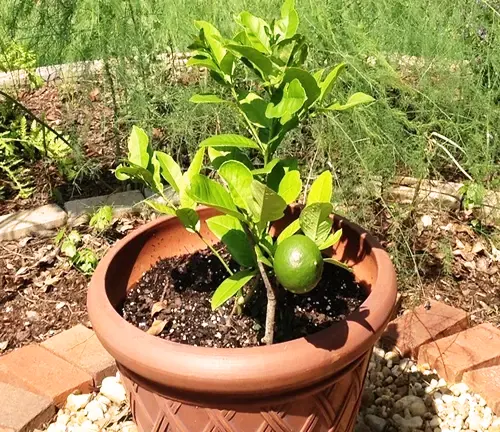
Soil Preferences
When cultivating Ponderosa Lemon Trees, it’s essential to select or amend the soil appropriately. Loamy soils enriched with organic matter, such as compost or well-rotted manure, provide an ideal foundation for these trees. The organic material enhances soil structure, moisture retention, and nutrient availability, promoting robust growth. It’s important to ensure proper drainage to prevent root rot, a common issue in poorly drained soils.
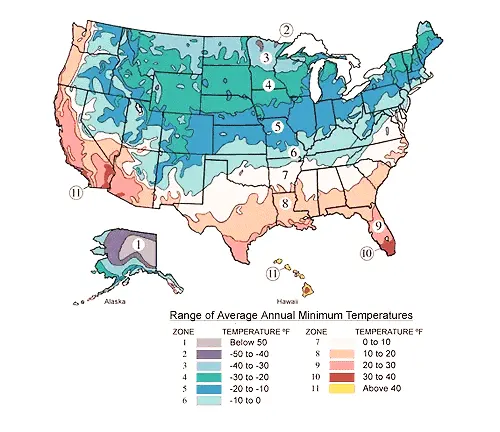
Hardiness Zones
Ponderosa Lemon Trees flourish in USDA hardiness zones 8 to 11, thriving in warm, temperate climates with mild winters and hot summers. In colder zones, consider protection or container cultivation to safeguard them during winter.
Additionally, mulching the tree’s base helps regulate soil temperature, conserve moisture, and deter weeds, contributing to the overall health and productivity of your Ponderosa Lemon Tree. Regular soil testing and maintenance will help create the optimal growing environment for this citrus tree, ensuring a thriving and fruitful addition to your garden or orchard.
Sun Preference
Ponderosa Lemon Trees thrive in full sun, requiring at least 6-8 hours of direct sunlight each day to produce healthy foliage and a generous crop of lemons.
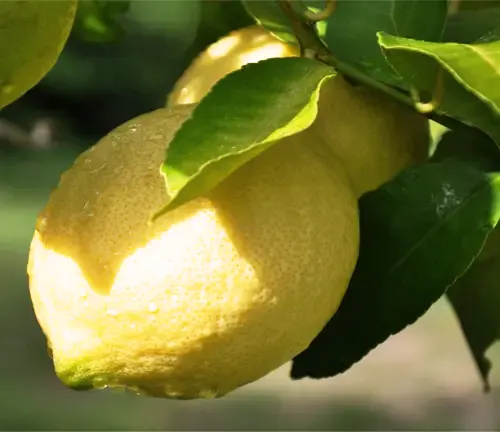
Attributes and Characteristics
These trees are admired for their glossy, fragrant leaves, vibrant white blossoms, and large, yellow Ponderosa lemons. Their evergreen nature ensures year-round visual appeal, while their unique fruiting habits make them a standout addition to any garden or orchard.
Wildlife Contribution
Ponderosa Lemon Trees attract pollinators like bees with their fragrant white blossoms, aiding in local ecosystem biodiversity. Their lush foliage also provides habitat and shelter for small wildlife.
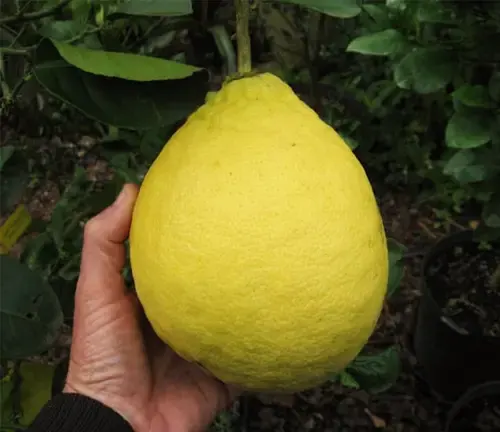
Care
To ensure healthy growth, Ponderosa Lemon Trees require well-draining soil, regular watering, and appropriate fertilization. Pruning for shape and pest management is essential, along with vigilant care to protect against common citrus pests and diseases.
Benefits
Ponderosa Lemon Trees offer numerous benefits, including a bountiful harvest of large, flavorful lemons that are excellent for culinary use. They also enhance the visual appeal of gardens and attract pollinators with their fragrant blossoms.
Invasive
Ponderosa Lemon Trees are not considered invasive and typically do not pose a threat to native ecosystems.
Lifespan
With proper care, Ponderosa Lemon Trees can live for several decades, providing a consistent source of fresh lemons and ornamental beauty to your outdoor space.
Disadvantage
One potential disadvantage of Ponderosa Lemon Trees is their susceptibility to common citrus pests and diseases, requiring regular maintenance and pest control measures to ensure their health.

Edible or Not
Ponderosa Lemon Trees produce large, edible lemons that are suitable for culinary use, prized for their unique flavor combining tartness and sweetness, making them a delightful addition to a wide range of dishes and beverages.
Habitat Requirements
Ponderosa Lemon Trees thrive in well-draining soil with adequate sunlight, making them a great fit for gardens or orchards in warm, temperate climates. They do well in USDA hardiness zones 8 to 11.
Name Origin
The name “Ponderosa” likely stems from the large size of the lemons this tree produces, reminiscent of the grandeur associated with the word “ponderosa.”
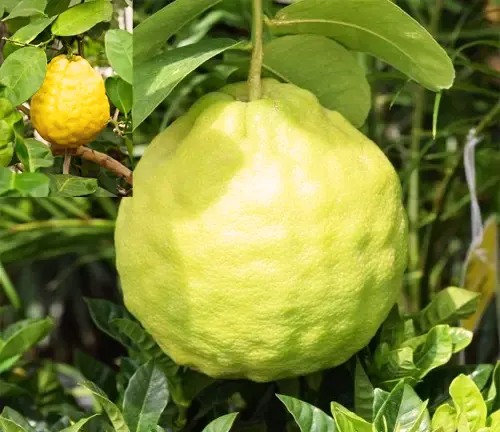
Varieties
Ponderosa Lemon Trees have several varieties, including ‘Ponderosa Improved,’ ‘Nirvana Ponderosa,’ and ‘Myers Improved,’ each with slight variations in fruit characteristics and growth habits.
Pruning
Regular pruning is essential for Ponderosa Lemon Trees to maintain their shape, remove dead or diseased branches, and encourage healthy growth. Prune in late winter or early spring before new growth begins, and ensure you use sharp, clean tools to prevent damage to the tree.
Propagating
Ponderosa Lemon Trees can be propagated through methods like stem cuttings or air layering. Stem cuttings involve taking a healthy branch or shoot from the parent tree and encouraging it to root in a suitable medium. Air layering involves creating a small wound on a branch, packing it with rooting hormone, and wrapping it until roots form. Both methods can be successful in producing new Ponderosa Lemon Trees, allowing you to expand your citrus garden.

Common Pests & Diseases
While Ponderosa lemon trees are generally hardy, they can be susceptible to common citrus pests and diseases. Some potential issues include aphids, spider mites, scale insects, and citrus leafminer. Diseases like citrus canker and citrus greening can also affect these trees. Proper care, including regular pruning, pest control measures, and disease management, can help keep these problems in check.
Fun Facts
- The Ponderosa lemon tree is thought to have its roots in the United States.
- It stands out as one of the first Ponderosa lemon varieties to reach ripeness, typically available for harvesting by late July or early August.
- Its vibrant yellow peel sets the Ponderosa lemon tree apart, making it easily distinguishable among the foliage.
- Ponderosa lemons are frequently employed in culinary endeavors like crafting applesauce and baking apple pies, thanks to their exceptional texture when subjected to heat.
We invite you to explore our range of Forestry Services and discover how we can cater to your needs. Don’t miss the opportunity to experience the quality and convenience we have to offer.
Frequently Asked Questions (FAQs)
- How do I care for a Ponderosa lemon tree?
Proper care includes providing well-draining soil, regular watering, and appropriate fertilization for wood tree Ash. Pruning to maintain shape and remove dead branches is also essential. Protecting the tree from pests and diseases is crucial for healthy growth. - When is the best time to harvest Ponderosa lemons?
Ponderosa lemons are typically ready for harvest in late winter to early spring. They should be picked when fully yellow and slightly soft to the touch. - Can I grow a Ponderosa lemon tree in a pot?
Yes, Ponderosa lemon trees can be grown in containers, which is especially useful in regions with colder winters. Be sure to choose a large pot, use well-draining soil, and provide adequate sunlight and care. - Are Ponderosa lemons good for culinary use?
Ponderosa lemons have a unique flavor, combining tartness and sweetness. They are excellent for culinary use, particularly in making lemon pies, preserves, and cocktails. - How do I protect my Ponderosa lemon tree from pests and diseases?
Regular inspections, the use of organic or chemical treatments as needed, and good cultural practices like proper watering and fertilization can help protect your tree from pests and diseases. Additionally, planting disease-resistant varieties can be beneficial. - What are some popular Ponderosa lemon tree varieties?
Varieties of Ponderosa lemon trees include ‘Ponderosa Improved,’ ‘Nirvana Ponderosa,’ and ‘Myers Improved.’ Each may have slightly different fruit characteristics and growth habits.
In conclusion, the Ponderosa lemon tree is a captivating addition to any garden or orchard. Its glossy leaves, fragrant blossoms, and large, yellow fruit make it both visually appealing and a source of delicious, homegrown citrus. With proper care and attention, you can enjoy a bountiful harvest of these unique lemons while enhancing the beauty of your outdoor space.



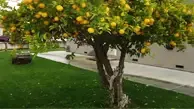
Leave your comment